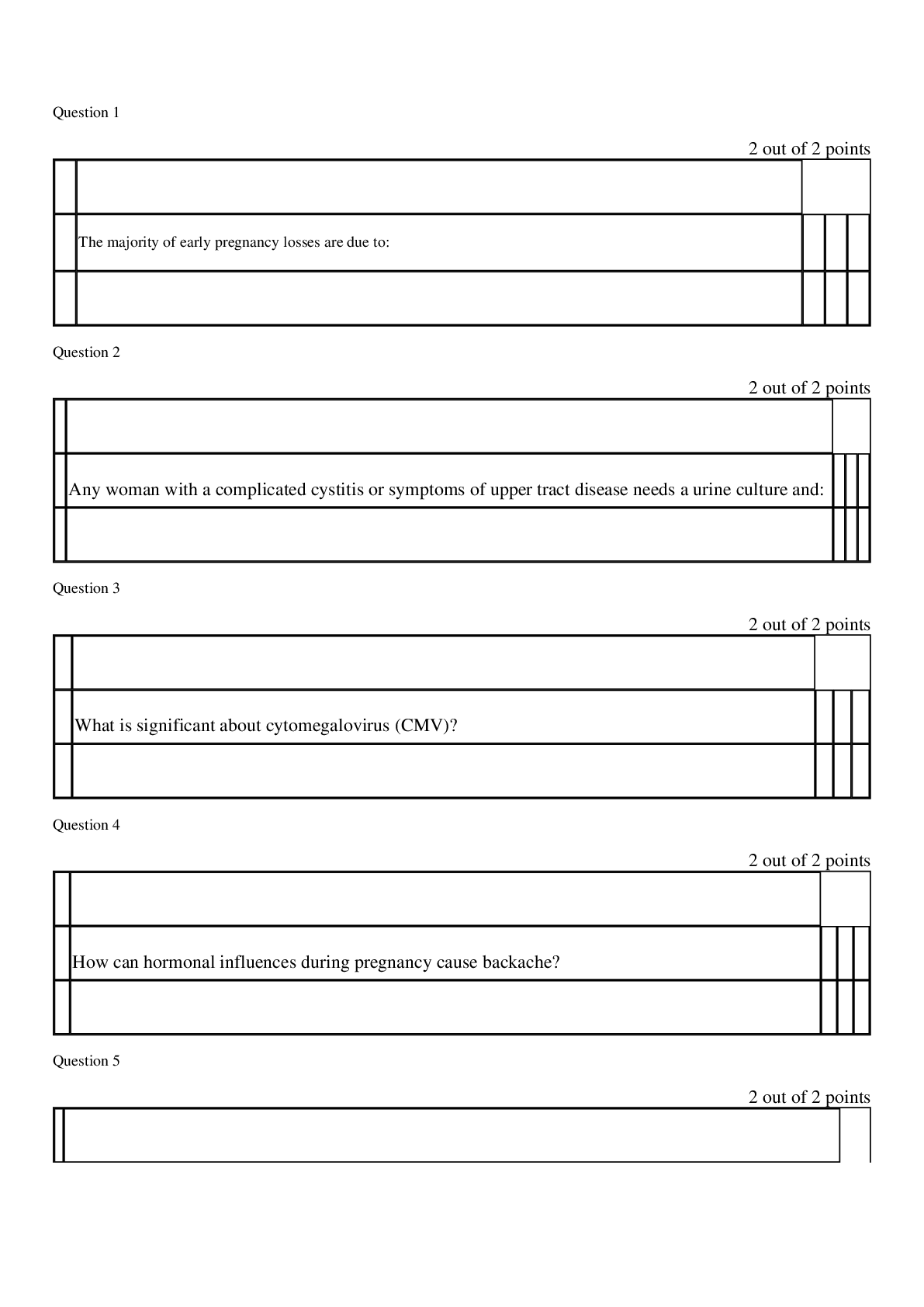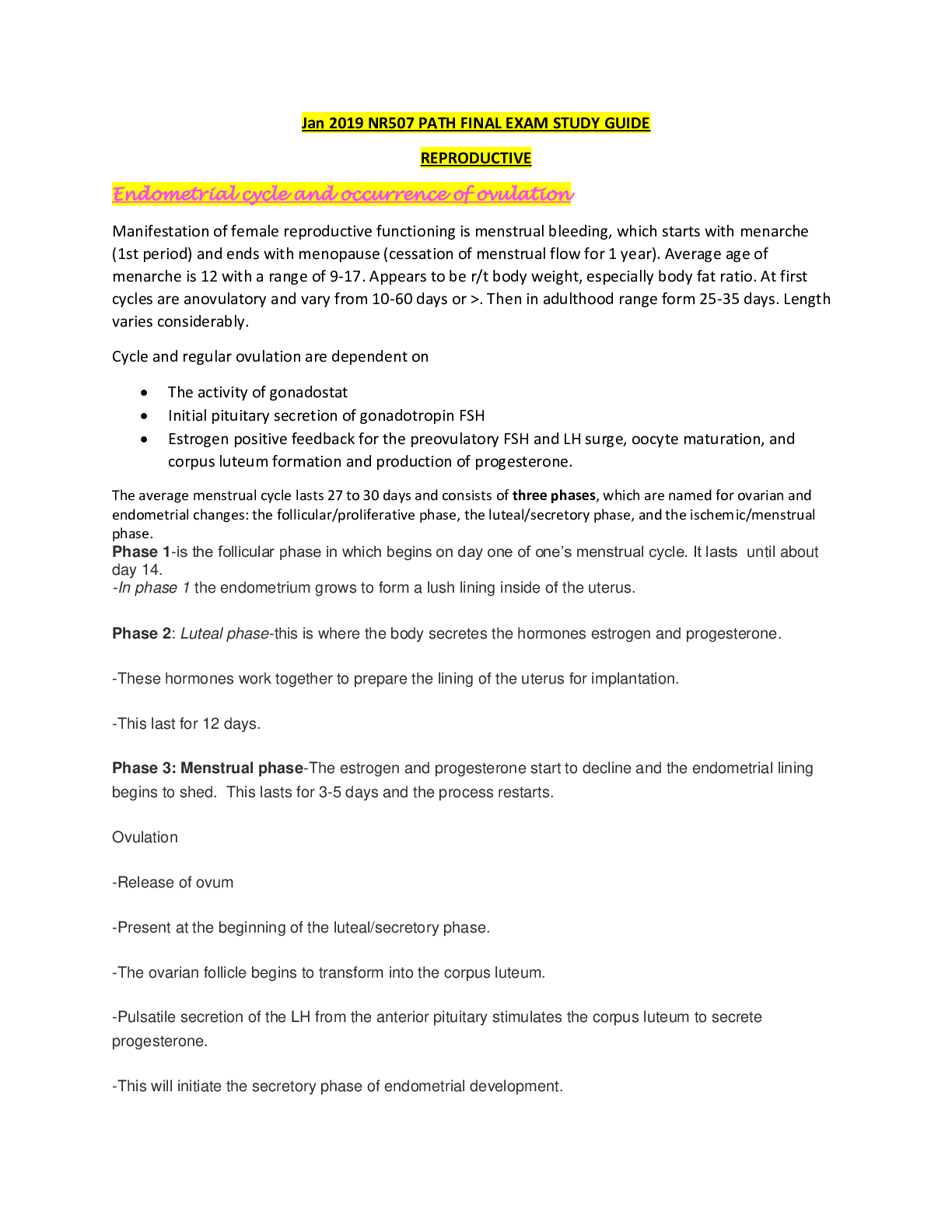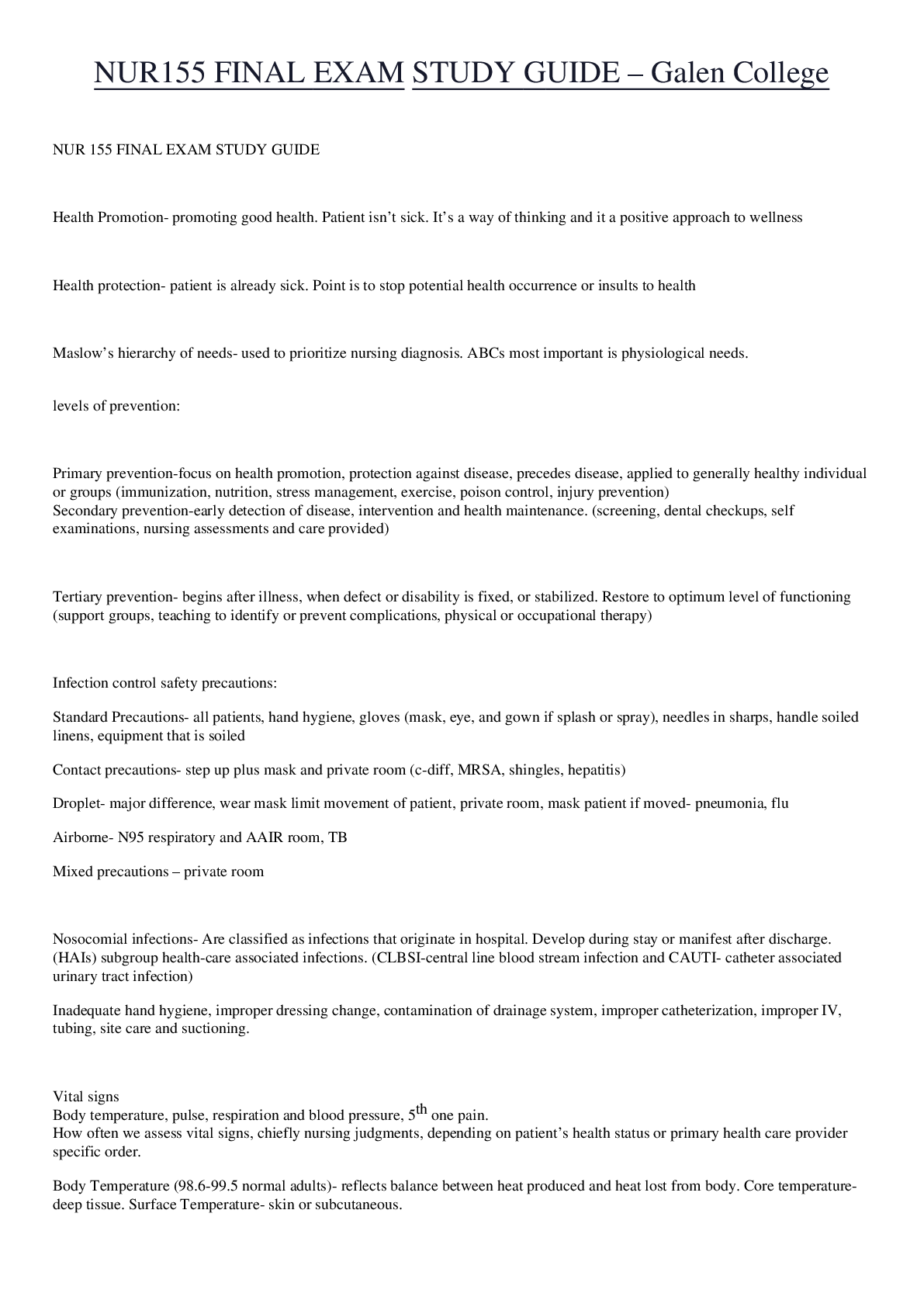*NURSING > STUDY GUIDE > NR 545 Final Exam Study Guide 2020 Week 7 : renal and urological disorders (All)
NR 545 Final Exam Study Guide 2020 Week 7 : renal and urological disorders
Document Content and Description Below
The final exam includes content from weeks 1-8. The deadline for this exam is Saturday evening at 11:50 pm. Week 8 closes on Saturday not Sunday. Week 7 : renal and urological disorders • Questions ... can include pathophysiology, health assessment (normal and abnormal), and pharmacologic treatment • Review required readings, course lectures, case study and learning activity. Fluid and electrolyte balance- processes in the kidney • Hormones controls reabsorption of fluid and electrolytes o Antidiuretic hormone From posterior pituitary; controls reabsorption of water by altering permeability of distal convoluted tubule and collecting duct o Aldosterone Secreted by adrenal cortex; controls sodium reabsorption and water by exchanging Na ions for K or hydrogen ions in distal convoluted tubule o Atrial natriuretic hormone From heart; 3rd hormone controlling fluid balance by reducing Na and fluid reabsorption in kidneys Renal circulation process Laboratory testing- purpose and interpretation ; Age related urinary changes ; Conditions/diagnoses associated with urine color changes Diagnostic test • Urinalysis o Constituents and characteristics of urine may vary w/ dietary intake, drugs, and care w/ which specimen is handled o Urine is normally: clear, straw colored and has mild color o Urine pH is 4.5-8.0 o Appearance Cloudy indicate presence of large amounts of protein, blood cells or bacteria and pus Dark color indicate hematuria (blood), excessive bilirubin content or highly concentrated urine Unpleasant or unusual odor indicate infection or result from certain dietary components or medications o Abnormal constituents (present in significant quantities) Blood (hematuria) • small (microscopic) amounts of blood indicates infection, inflammation, or tumors in urinary tract • large numbers of RBC (gross hematuria) indicates increased glomerular permeability or hemorrhage in tract protein (proteinuria, albuminuria) • indicates leakage of albumin or mixed plasma proteins into filtrate d/t inflammation and increased glomerular permeability bacteria (bacteriuria) and pus (pyuria) • indicates infection in urinary tract urinary casts (microscopic sized molds of tubules, consisting of one or more cells (bacteria, protein, and so on)) indicates inflammation of kidney tubules [Show More]
Last updated: 2 years ago
Preview 1 out of 11 pages

Buy this document to get the full access instantly
Instant Download Access after purchase
Buy NowInstant download
We Accept:

Reviews( 0 )
$14.50
Can't find what you want? Try our AI powered Search
Document information
Connected school, study & course
About the document
Uploaded On
Apr 27, 2022
Number of pages
11
Written in
Additional information
This document has been written for:
Uploaded
Apr 27, 2022
Downloads
0
Views
82


























